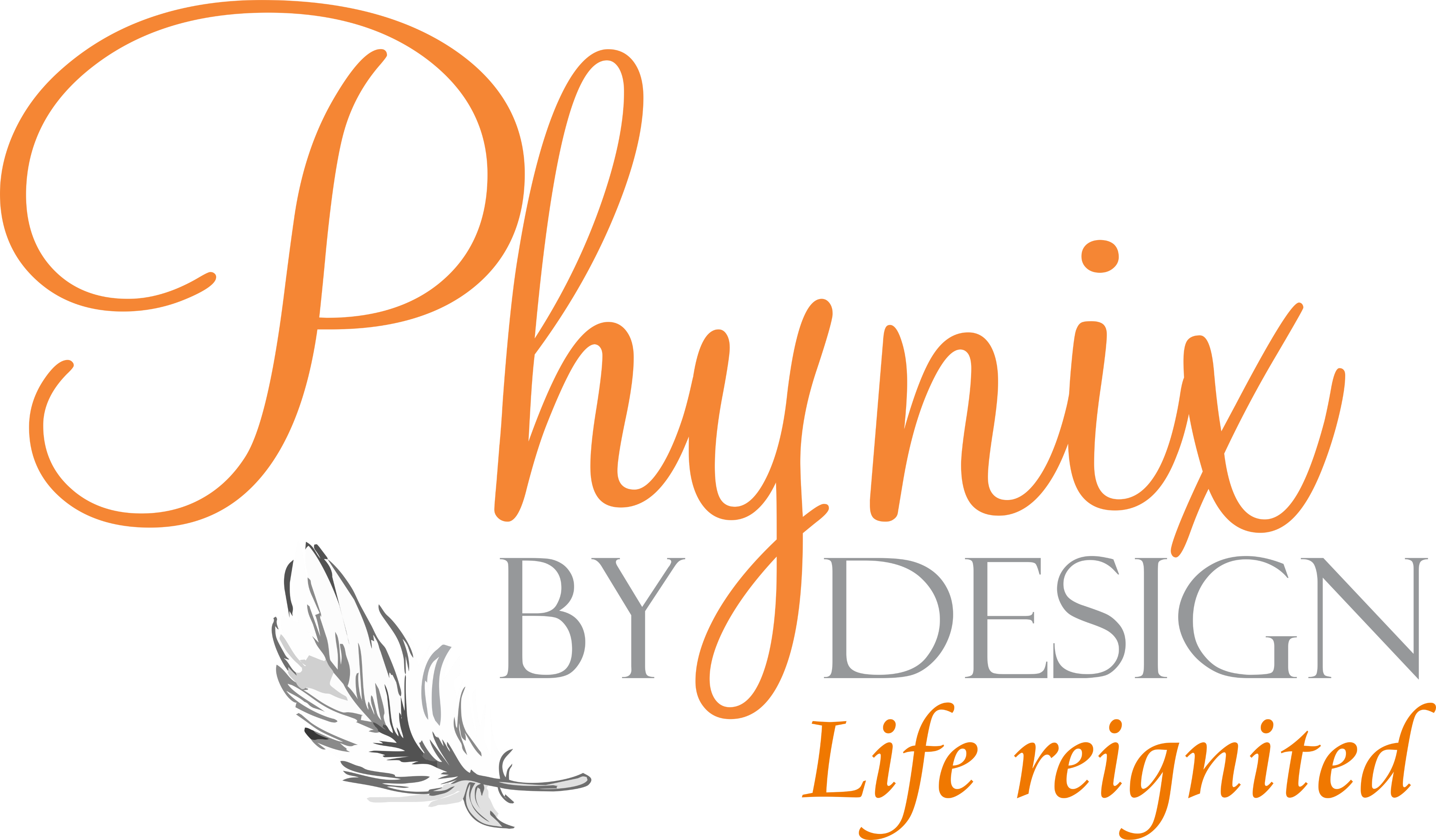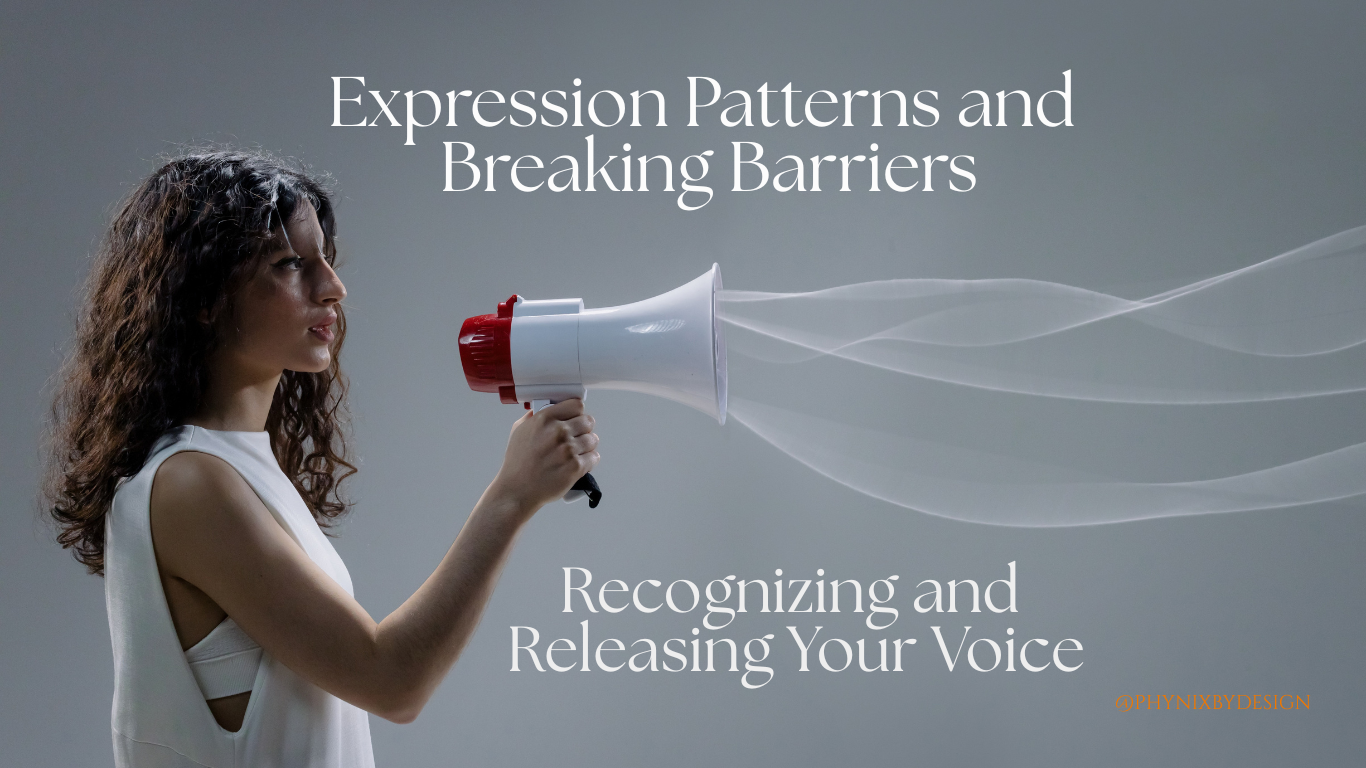Hello again!
How has your week been exploring your authentic voice? I’ve been thinking about you and wondering what discoveries you’ve made as you’ve begun reconnecting with your expression.
This week, we’re diving deeper into understanding the unique patterns that shape how you express yourself and the barriers that might be holding your authentic voice back. I’m so excited to share these insights and practices with you because I’ve seen such profound transformations when people begin to recognize and gently work with their expression patterns.
The Fingerprints of Your Expression
Have you ever noticed how you express yourself differently depending on who you’re with? Perhaps you speak freely with your closest friends but become more reserved in professional settings. Maybe your voice flows easily when writing but hesitates when speaking in groups. Or perhaps certain topics bring out your most passionate expression while others have you choosing your words carefully.
These aren’t random fluctuations – they’re your unique expression patterns, as distinctive as your fingerprints. They’ve been shaped by your experiences, beliefs, and the habits you’ve developed throughout your life. And understanding these patterns is like finding a map to more consistent authentic expression.
I remember working with a client – let’s call her Sarah – who was puzzled by how confidently she could express herself one-on-one but how her voice seemed to vanish in group settings. As we mapped her expression patterns, she realized this traced back to childhood experiences where her ideas had been dismissed in classroom settings. This awareness was the first step in her journey to finding her voice in all contexts.
Mapping Your Expression Patterns
Let’s take some time to begin mapping your unique expression fingerprint. Consider these different dimensions:
Context Patterns: Where do you express most authentically? Is it in intimate conversations, when writing, in creative settings, or perhaps when you’re in nature? Where do you feel most guarded or filtered?
Relationship Patterns: With whom do you share your true voice freely? With whom do you find yourself filtering heavily? What qualities make a relationship feel safe for authentic expression?
Content Patterns: What topics bring out your most authentic voice? What subjects trigger self-censoring or careful wording? Notice which themes have you leaning in with excitement and which have you pulling back.
Emotional Patterns: Which emotions do you express authentically? Which do you tend to hide or dilute? Many of us have learned it’s okay to express certain emotions (like happiness or calm) while suppressing others (like anger or vulnerability).
Medium Patterns: Through which channels does your authentic expression flow most easily? Speaking, writing, creating art, movement, or perhaps a specific creative outlet that feels like it was made for your voice?
Take a moment to reflect on one of these pattern dimensions. What do you notice about your own expression tendencies?
Remember, there’s no judgment here – only awareness. These patterns developed for reasons, often as protection mechanisms in situations where authentic expression felt unsafe.
Today’s Awareness Practice
This simple practice has been transformative for so many of my clients:
- Notice one moment today when you expressed freely, when your words or actions flowed without hesitation
- Notice one moment when you held back, when you filtered or edited your expression
- Get curious about the difference between these moments – what elements were present or absent?
- What one small shift might support more authentic expression in the situation where you held back?
This practice builds the muscle of self-observation without criticism – an essential skill for developing authentic expression. It’s not about forcing yourself to express authentically in every situation (that might not always be appropriate or safe), but about making conscious choices rather than operating on autopilot.
The Power of Daily Voice Rituals
One of the most beautiful things I’ve witnessed in my work is how small, consistent practices can dramatically strengthen authentic expression over time. Just as athletes don’t build strength through occasional massive workouts but through regular training, we build expressive strength through daily practice.
Here are some powerful daily rituals that have helped my clients develop stronger authentic expression:
Morning Pages Ritual
This practice comes from Julia Cameron’s wonderful book “The Artist’s Way,” and I’ve seen it create profound shifts in people’s relationship with their voice:
- Upon waking, write three full pages of whatever comes to mind
- No editing, censoring, or judging – just let it flow
- Don’t skip or read back initially
- Make this practice sacred and consistent
The beauty of morning pages is that they bypass your inner critic because you’re writing first thing, before your analytical mind is fully awake. They create a direct channel to your authentic voice before the day’s demands begin filtering your expression. And because you’re not trying to create anything “good” – you’re just filling three pages – the pressure is off.
Voice Recording Ritual
While the thought of recording ourselves often makes us cringe initially, this practice develops comfort with your literal and metaphorical voice:
- Set a timer for 2-3 minutes
- Record yourself speaking about anything meaningful to you
- Listen back with curiosity, not criticism
- Notice the qualities of your voice when you’re engaged with your topic
- Over time, observe how your comfort with your own voice increases
I’ve had clients tell me that after a month of this practice, they not only became comfortable with the sound of their voice but began to recognize immediately when they were speaking authentically versus when they were falling into people-pleasing or performance patterns.
Truth Declaration Ritual
This simple but powerful practice involves speaking one authentic truth aloud daily:
- Each morning, identify one truth you hold
- Speak it aloud, preferably while looking in a mirror
- Notice how it feels in your body to speak this truth
- Over time, gradually increase the depth or vulnerability of these truths
This practice builds the muscle of articulating authentic truths, making it easier to express authentically in other situations. Start with simple truths that feel easy, and as your comfort grows, experiment with truths that feel more vulnerable or significant.
Vocal Resonance: Embodying Your Voice
Your voice isn’t just a mental construct – it’s a physical experience. The vibrations of your voice literally resonate in your body, creating a feedback loop between physical sensation and expression.
Try this vocal resonance practice to strengthen the physical dimension of your authentic voice:
- Stand with feet shoulder-width apart
- Take three deep breaths into your belly
- Make a humming sound, starting low
- Gradually increase volume and pitch
- Notice where you feel the vibration in your body
- End with an open “Ahhhh” sound
Pay attention to where you feel the strongest resonance in your body. This area often holds keys to your authentic expression. For many people, vibration in the chest indicates heart-centred expression, while throat vibration can signal intellectual clarity.
I love this practice because it helps us remember that authentic expression isn’t just about finding the right words – it’s about allowing our entire being to participate in the act of expression.
Breaking Voice Barriers
Every voice encounters barriers – those internal and external obstacles that make authentic expression challenging. Breaking through these barriers is an essential part of your expression journey.
The first step in navigating barriers is recognizing them compassionately. These are some common expression barriers I see in my work:
The Inner Critic: That internal voice that judges your expression as inadequate, often saying things like “That sounds stupid” or “No one cares what you have to say”
Perfectionism: The belief that expression must be flawless to be valuable, which leads to excessive editing or silence
Rejection Fear: Concern that authentic expression will lead to disconnection, judgment, or exclusion
Imposter Syndrome: Feeling unqualified to express your perspective, despite your lived experience and insights
Comparison Trap: Measuring your expression against others’ and finding it lacking
Safety Concerns: Real or perceived threats to psychological safety when expressing authentically
Does one of these barriers feel particularly familiar to you? If so, I invite you to approach it with:
Curiosity: “What’s behind this hesitation?” “What is this barrier trying to protect me from?”
Compassion: “This barrier likely served me once” “It makes sense that I developed this pattern”
Courage: “I can express even with the barrier present” “My voice matters, even if it shakes”
Creativity: “There are multiple paths to authentic expression” “If this way doesn’t work, I can try another”
Community: “Others can help me navigate this barrier” “I don’t have to do this alone”
One of my clients beautifully described breaking through her perfectionism barrier as “learning to sing with the door open.” She had always sung in the shower or alone in her car, but never where others could hear. As she worked with her perfectionism barrier, she gradually opened the bathroom door while singing – first just a crack, then halfway, then fully – until she could maintain her authentic expression even knowing others might hear.
Your Week 2 Challenge
This week, I invite you to commit to one specific daily voice ritual. Choose from those suggested above or create your own approach that resonates with your unique voice and circumstances.
Remember, consistency is key – even five minutes daily will strengthen your authentic expression more effectively than occasional longer practices. Set yourself up for success by choosing a practice that feels doable and perhaps even enjoyable.
As you move through this week, notice with gentle awareness:
- What patterns emerge in your expression?
- Which daily practice most effectively connects you with your authentic voice?
- What barriers arise as you practice more consistent expression?
These observations will provide valuable insights as you continue developing your authentic voice.
Join the Journey
I’m so excited to walk this path with you! Throughout this week, I’ll be sharing daily practices on social media to support your authentic expression journey. Follow along on Instagram, Facebook, or LinkedIn for regular inspiration and practical exercises.
I’d love to hear your experiences with finding your authentic voice. What helps you express more authentically? What challenges are you facing? Comment through socials or reach out directly to share your journey.
Remember: Your authentic voice is your greatest gift. The world needs your unique expression in a way that only you can provide. Let’s begin unveiling it together, one gentle practice at a time.
With warmth and belief in your voice,
Gemma-Lee
About the Author:
Gemma-Lee Harvey is a Holistic Counsellor and Lifestyle Coach based on Australia’s Sunshine Coast. With a diverse background spanning psychology, business, counselling, and coaching, she creates a nurturing space for exploring one’s full potential. Her gentle yet practical approach kindles the transformative spirit within, guiding individuals through life’s challenges as they rise through empowerment.
Contact:
🌐 www.phynixbydesign.com.au
☎ 07 5493 6742
📱 0448 562 814
🏢 Brightwater Wellness Hub, Shop 7E 69-79 Attenuata Drive, Mountain Creek QLD 4557

